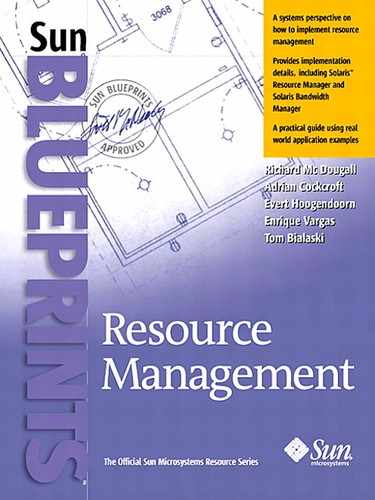When to Use Basic Solaris Features
The basic facilities of the Solaris operating environment are sufficient for simple resource management that can be partly implemented manually, where low system cost is more of an issue than automating and controlling the management process.
On a large multiprocessor system, you can use processor partitioning at the per-CPU level. This obviously doesn't work on uniprocessors and is too coarse in granularity with small numbers of CPUs.
Some of the software controls such as limits can be set globally, so if the same limit is appropriate for all the users, the basic limits set by Solaris software might be useful.
With a simple workload that is performance sensitive, the additional overhead of measuring and controlling resources can be an issue. The basic Solaris features are always present and have low overhead when enabled.
Relationship to Other Resource Control Features
Although the Solaris operating environment provides the foundation, some hardware and optional software features extend that capability. In some cases, the Solaris operating environment itself is a limiting factor. Each of the following products is described in detail in its own chapter.
Solaris Resource Manager Software
Solaris Resource Manager (SRM) extends some of the resource management concepts of the Solaris operating environment by managing resources on a per-user basis rather than having a single global default for limits. It also completely replaces the regular Solaris timeshare scheduler with its own hierarchical share based scheduler. SRM software also maintains accrued usage accounting information for each user, which is much more detailed and accurate than the regular Solaris accounting information.
Dynamic System Domains and Dynamic Reconfiguration
The Sun Enterprise 10000 server implements dynamic system domains, where each domain runs its own copy of the Solaris operating environment. Domains can grow and shrink at runtime without requiring a reboot. The Sun Enterprise 3500 to 6500 servers implement a single domain but still allow CPUs, memory, and I/O boards to be dynamically added or removed from a running system. This requires considerable support in the Solaris software, and in particular all device drivers must implement extra functionality that allows them to be dynamically reconfigured. Old and third-party devices still work but require a full reboot if they need to be reconfigured in or out of a system.
Solaris Bandwidth Manager Software
Solaris Bandwidth Manager software uses the Solaris streams networking infrastructure. It pushes extra streams modules onto the protocol stack that instruments and controls packets coming and going on each network interface.
